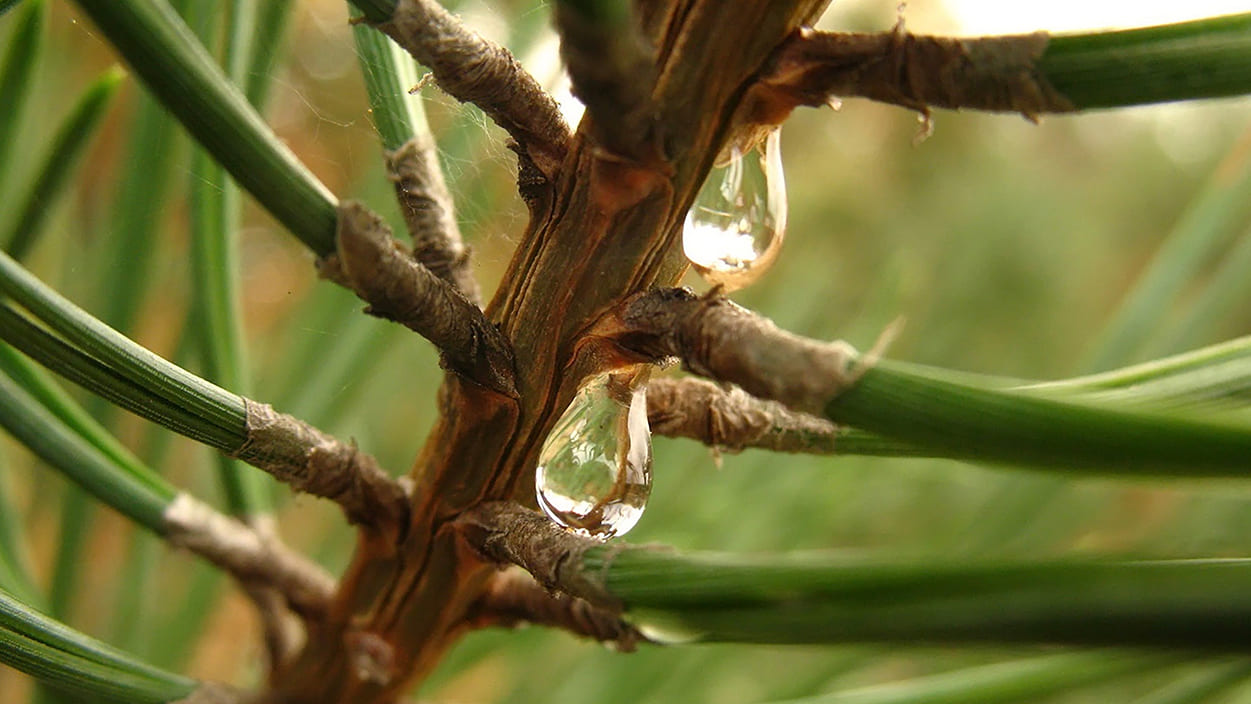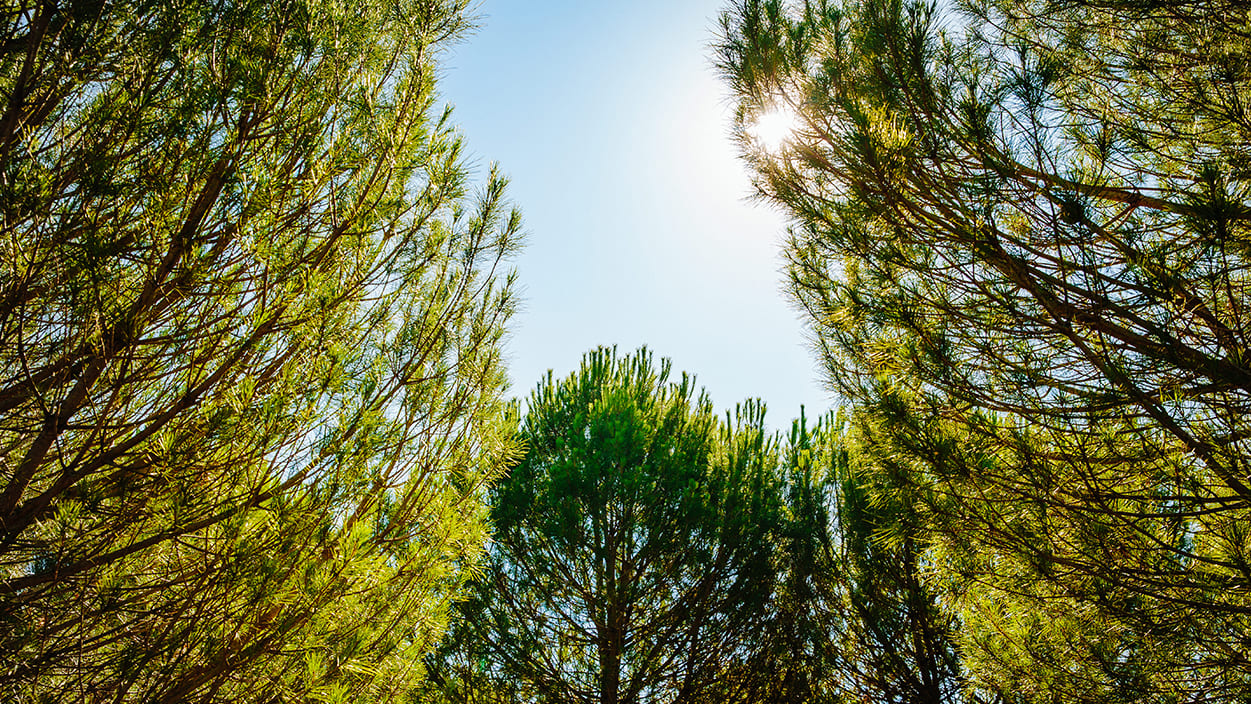The chaotic sea of dunes, which was progressively encroaching on the farmland, was contained and sown with pine. On the high waves of sand, the green foam of the scrub was born and the pine trees, dark and rough, sank their roots”, wrote Jaime Cortesão (1884-1960), in “Portugal, Land and Man”, describing one of the biggest ever reforestation campaigns, to which the Portuguese coastline owes its pine forest habitat.
Several types of trees we know as pine (a species of the genus Pinus) grow naturally in Portugal, but the large areas of pine forest that stretch from north to south would not exist if they had not been planted. The Leiria Pine Forest, where planting began during the reign of King Afonso III (1210-1279), bears witness to this and was one of the first reforestation initiatives in the world.
Centuries later (from the 18th century onwards), new pine forest habitats were created from the Minho to the Algarve to halt the advance of coastal sand, which threatened to occupy villages and agricultural fields, and silt up river mouths. In 1936, more than 23 000 hectares of dunes had been planted with trees, mainly pine, and it is to these that Jaime Cortesão refers when he talks about the “penisco” – one of the names given to the seeds of the maritime pine (Pinus pinaster). At that time, there were also large-scale reforestation campaigns of waste land, in which thousands of hectares of trees were planted on mountain slopes, especially in the centre and north of the country (Serra da Estrela and Serra do Gerês, for example). Once again, maritime pines were the species of choice.
Portuguese pines forests are, therefore, mostly made up of the Pinus species most commonly seen in Portugal, the maritime pine, but also the stone pine (Pinus pinea) and the less frequent Scots pine (Pinus sylvestris), considered rare (there is only one native population in Gerês) and endangered, according to the Red List of Vascular Plants for Mainland Portugal. There are also exotic species of Pinus, such as the black pine (Pinus nigra) which has been planted quite widely, the Aleppo pine (Pinus halepensis) and the Monterey pine (Pinus radiata). The first two are native to other European countries and the last one to North America.
With such a widespread presence in Portugal, “pinewoods are the second largest forest formation, with an area of almost 1 million hectares…”, says the sixth National Forest Inventory, only surpassed by the evergreen hardwood formations: forests of cork oak (Quercus suber) and holm-oak (Quercus rotundifolia).
There are various species of flower that grow in the underbrush of the pine forests and animals that live or feed on them, although there are differences between coastal pine forests (dune), inland and mountain pines, as well as between the north and south of the country, since the different locations, with different topography, climate and soils, end up creating pine forest habitats with distinct characteristics.
Gorse, Spanish lavender, Montpellier cistus, heather and ferns are examples of the flora that usually grows under the shade of the pine tree canopy. Along the coast, animals you may encounter include amphibians and reptiles such as the Iberian spadefoot toad, the Montpellier snake, the viperine water snake, the snub-nosed viper and Carbonell’s wall lizard (the latter is native only on the Iberian Peninsula – an endemic species). Some of the most common birds are tits, but also woodpeckers and wrens, and mammals include the fox and the genet, the field mouse and the squirrel. For many of them (birds and mammals) pine nuts are a source of food: the ways in which fallen pine cones are chewed indicate the presence of different species.
It should be noted that several maritime pine forests and stone pine forests (or mixed forests) with adult trees located on coastal dunes are included as one of the priority habitats for conservation in the Natura 2000 Network Sectoral Plan – Habitat 2270. This habitat can be found from the area of Ovar and Espinho, in the North, to Vila Real de Santo António, in the South of Portugal, but describing this habitat is complex as it covers a very wide and specific set of characteristics, including the species of flora identified in the undergrowth of these pine forests, such as the existence of cork oak forests, Kermes oaks, juniper and/or crowberry thickets (which, in turn, are part of other priority habitats of the Natura Network Sectoral Plan 2000).





